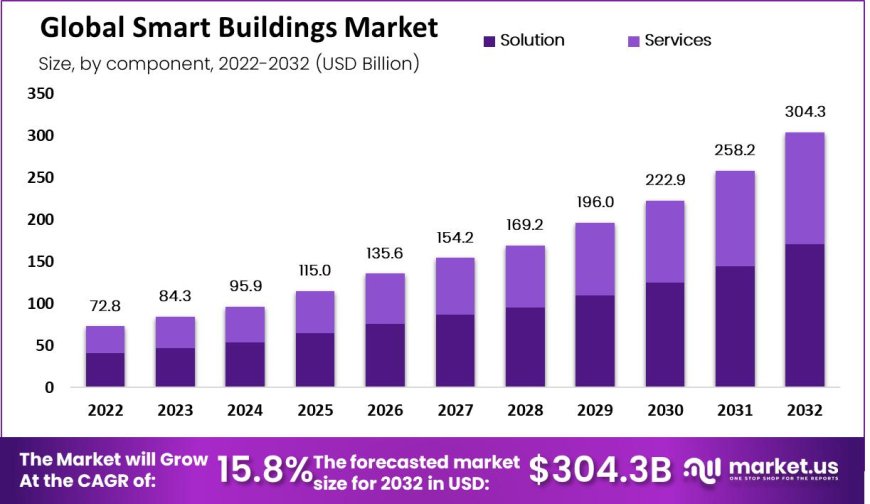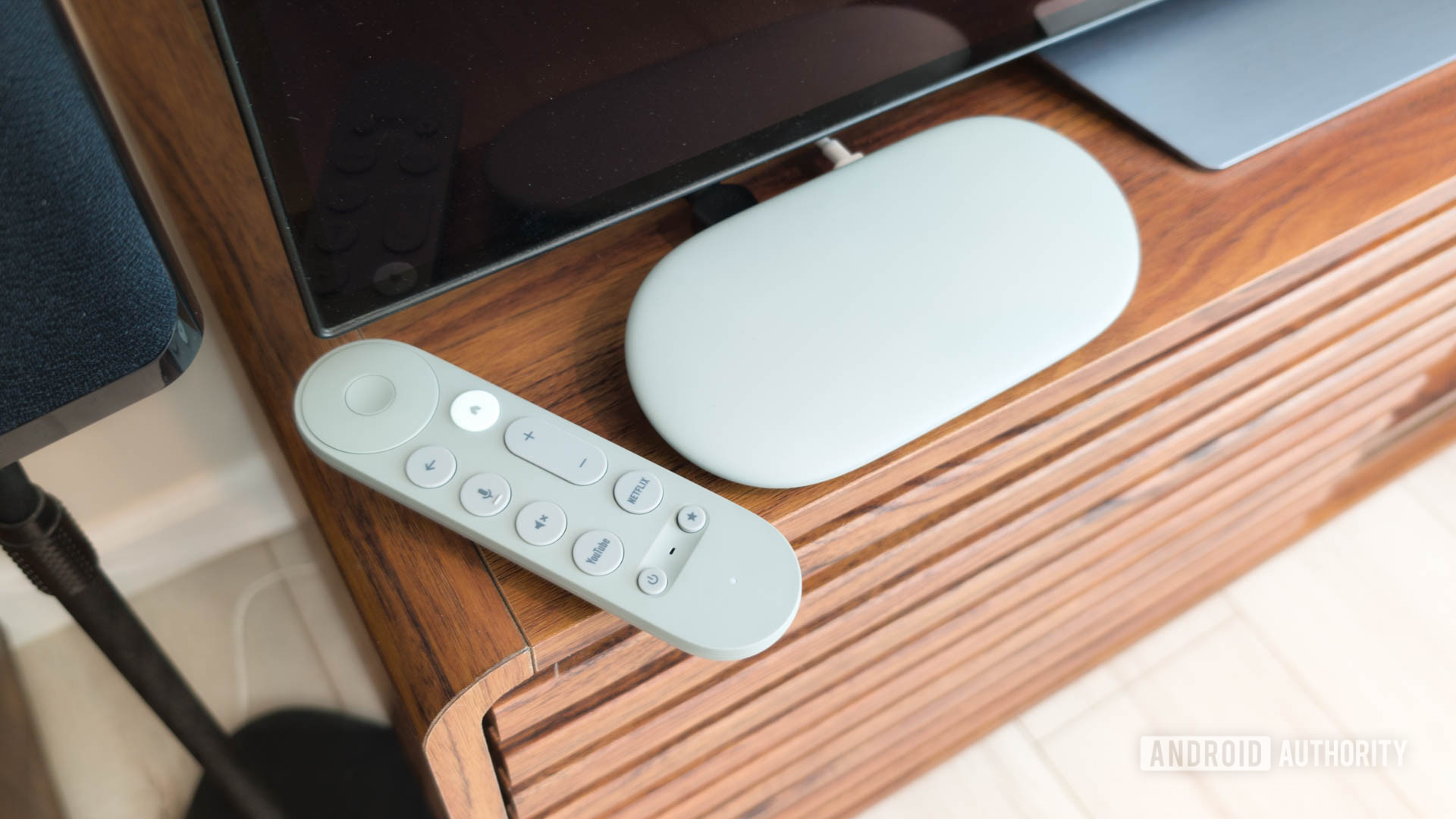Transforming Spaces: The Smart Building Revolution

Market Overview
The Smart buildings market was valued at USD 72.8 billion in 2022 and is projected to reach USD 304.3 billion by 2032, with a compound annual growth rate (CAGR) of 15.8%.
The smart building market has experienced significant growth and transformation in recent years. With the rapid advancement of technology and the increasing focus on sustainability and energy efficiency, smart buildings have emerged as a key solution for optimizing resource utilization and enhancing occupant comfort. Smart buildings leverage various technologies, including the Internet of Things (IoT), artificial intelligence (AI), cloud computing, and data analytics, to enable seamless integration and automation of building systems.
Top Key Players
· ABB Ltd.
· Emerson Electric Co.
· Hitachi Ltd.
· Honeywell International Inc.
· Johnson Controls
· Legrand SA
· Schneider Electric SE
· Siemens AG
· Telit
· IBM Corporation
· Other Key Player
Get a free Sample Copy of This Report@ https://market.us/report/smart-building-market/request-sample/
Key Market Segments
Based on Component
· Solution
· Building Infrastructure Management
· Security and Emergency Management
· Energy Management
· Network Management
· Workforce Management
· Waste Management
· Services
· Consulting
· Implementation
· Support and Maintenance
Based on End-User
· Residential
· Commercial
· Industrial
Demand and Trends:
- Energy Efficiency and Sustainability: Increasing concerns about energy consumption and environmental impact have led to a growing demand for smart building solutions. These solutions enable real-time monitoring and optimization of energy usage, resulting in significant energy savings and reduced carbon footprint.
- IoT and Connectivity: The proliferation of Internet of Things (IoT) devices and improved connectivity infrastructure has paved the way for smart building solutions. IoT sensors and devices can collect data from various building systems, enabling centralized control and automation for enhanced efficiency and performance.
- Data Analytics and AI: The integration of data analytics and artificial intelligence (AI) technologies in smart buildings allows for advanced insights and predictive capabilities. By analyzing data from various sources, including occupancy patterns, weather conditions, and energy consumption, AI algorithms can optimize building operations, improve maintenance practices, and enhance occupant comfort.
- Occupant Experience and Well-being: There is a growing emphasis on creating a comfortable and personalized experience for building occupants. Smart building solutions can adjust lighting, temperature, and other environmental factors based on individual preferences, improving occupant comfort and well-being.
- Safety and Security: Smart buildings incorporate advanced security systems, including access control, surveillance cameras, and alarm systems, to ensure the safety of occupants and assets. These systems can be integrated with other building systems, providing a comprehensive security solution.
- Integration and Interoperability: The demand for seamless integration and interoperability among different building systems is increasing. Building owners and operators are looking for solutions that can integrate with existing infrastructure and enable centralized control and management.
Supply chain analysis:
- Suppliers: The supply chain begins with suppliers who provide the necessary components and technologies required for smart building solutions. These suppliers can include manufacturers of IoT devices, sensors, connectivity solutions, energy management systems, building automation systems, and other related technologies.
- Manufacturers: Manufacturers play a crucial role in the supply chain by assembling and producing smart building solutions. They integrate various components and technologies to create smart building systems, including lighting systems, HVAC systems, security systems, and energy management systems. Manufacturers may also develop software platforms and applications that enable the control and management of smart building solutions.
- Distributors and Resellers: Distributors and resellers act as intermediaries between manufacturers and end-users. They purchase smart building solutions from manufacturers and distribute them to contractors, system integrators, and other channel partners. Distributors and resellers may also provide value-added services such as technical support, training, and after-sales services.
- System Integrators: System integrators play a crucial role in the supply chain by integrating various smart building systems and technologies into a cohesive solution. They work closely with manufacturers, distributors, and end-users to design, install, and configure smart building systems according to specific requirements. System integrators ensure that different components and systems work together seamlessly, enabling the full functionality of the smart building solution.
- Contractors and Installers: Contractors and installers are responsible for the physical installation of smart building systems in buildings. They work closely with system integrators to ensure proper installation, wiring, and connectivity of various components. Contractors and installers may also provide maintenance and support services after the installation is complete.
- Service Providers: Service providers offer ongoing support and maintenance services for smart building solutions. This can include remote monitoring, troubleshooting, software updates, and equipment maintenance. Service providers play a crucial role in ensuring the smooth operation and performance of smart building systems throughout their lifecycle.
Technological innovations:
- Internet of Things (IoT): IoT technology plays a central role in smart buildings by connecting various devices and systems to a network. IoT sensors and devices collect data from different building systems, enabling real-time monitoring, control, and automation. This technology allows for seamless integration and communication among different components, optimizing energy usage, improving operational efficiency, and enhancing occupant comfort.
- Artificial Intelligence (AI) and Machine Learning (ML): AI and ML algorithms are increasingly being used in smart buildings to analyze large volumes of data and make intelligent decisions. AI-powered systems can learn from historical data, predict patterns, and optimize building operations. For example, AI algorithms can adjust lighting and HVAC systems based on occupancy patterns, weather conditions, and individual preferences, leading to energy savings and improved occupant comfort.
- Cloud Computing and Edge Computing: Cloud computing and edge computing technologies are transforming the way data is stored, processed, and analyzed in smart buildings. Cloud-based platforms provide scalability, flexibility, and remote access to data, enabling advanced analytics and centralized control. Edge computing, on the other hand, allows for real-time processing and decision-making at the device level, reducing latency and enhancing responsiveness.
- Data Analytics and Visualization: Advanced data analytics techniques are used to extract valuable insights from the vast amount of data generated by smart building systems. Data analytics platforms can identify patterns, anomalies, and trends, enabling proactive maintenance, energy optimization, and predictive analytics. Data visualization tools present the analyzed data in a user-friendly format, allowing building operators to make informed decisions and take appropriate actions.
- Building Energy Management Systems (BEMS): BEMS solutions are designed to monitor, control, and optimize energy usage in smart buildings. These systems integrate with various building systems, such as lighting, HVAC, and renewable energy sources, to provide real-time energy data and enable energy-saving strategies. BEMS solutions can also generate reports and analytics to track energy consumption, identify inefficiencies, and implement energy conservation measures.
- Occupant-Centric Technologies: Smart buildings are increasingly focusing on enhancing the occupant experience and well-being. Technologies such as occupancy sensors, personalized control interfaces, and mobile applications allow occupants to customize their environment, adjust lighting and temperature, and access building services. Additionally, indoor air quality monitoring systems and wellness-focused features contribute to creating healthier and more comfortable indoor environments.
Contact us:
Global Business Development Team: Market.us
Market.us (Powered By Prudour Pvt. Ltd.)
Send Email: inquiry@market.us
Address: 420 Lexington Avenue, Suite 300 New York City, NY 10170, United States
Tel: +1 718 618 4351, +91 78878 22626
What's Your Reaction?
 Like
0
Like
0
 Dislike
0
Dislike
0
 Love
0
Love
0
 Funny
0
Funny
0
 Angry
0
Angry
0
 Sad
0
Sad
0
 Wow
0
Wow
0

















































